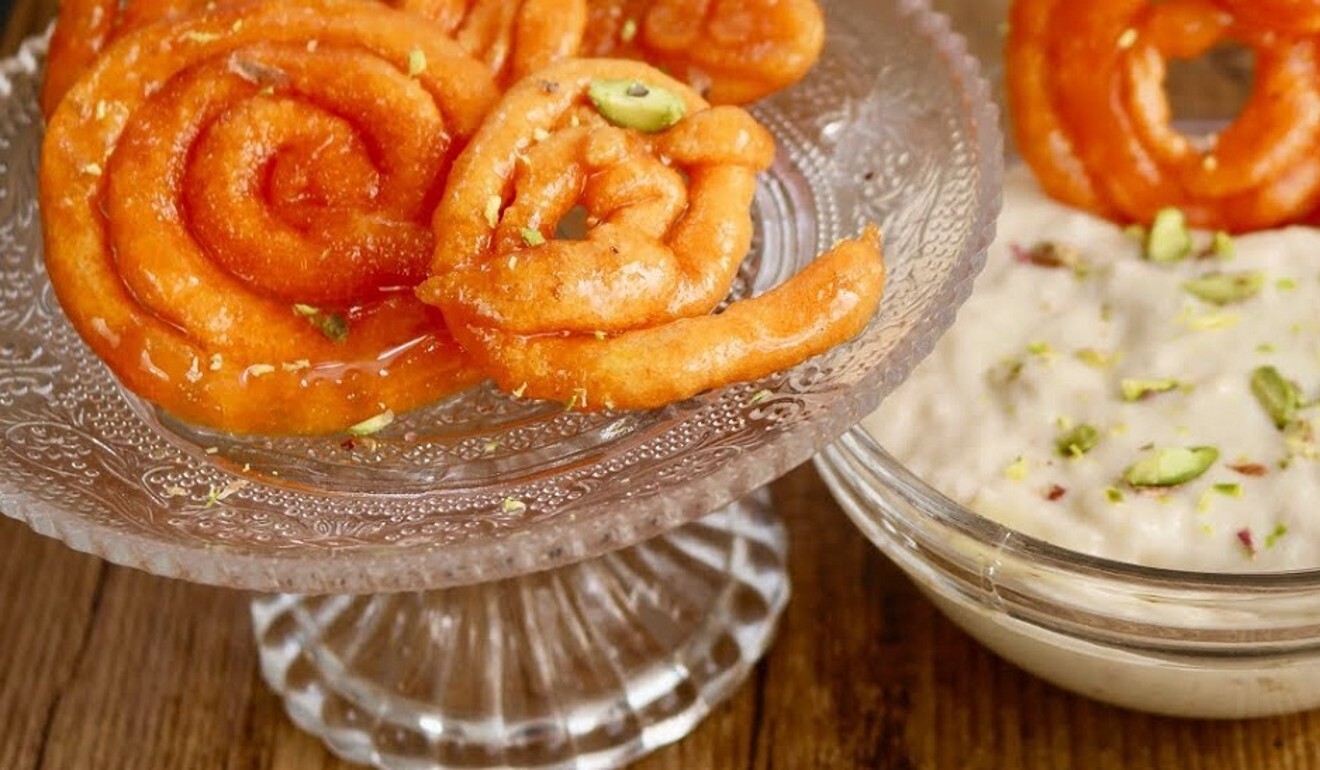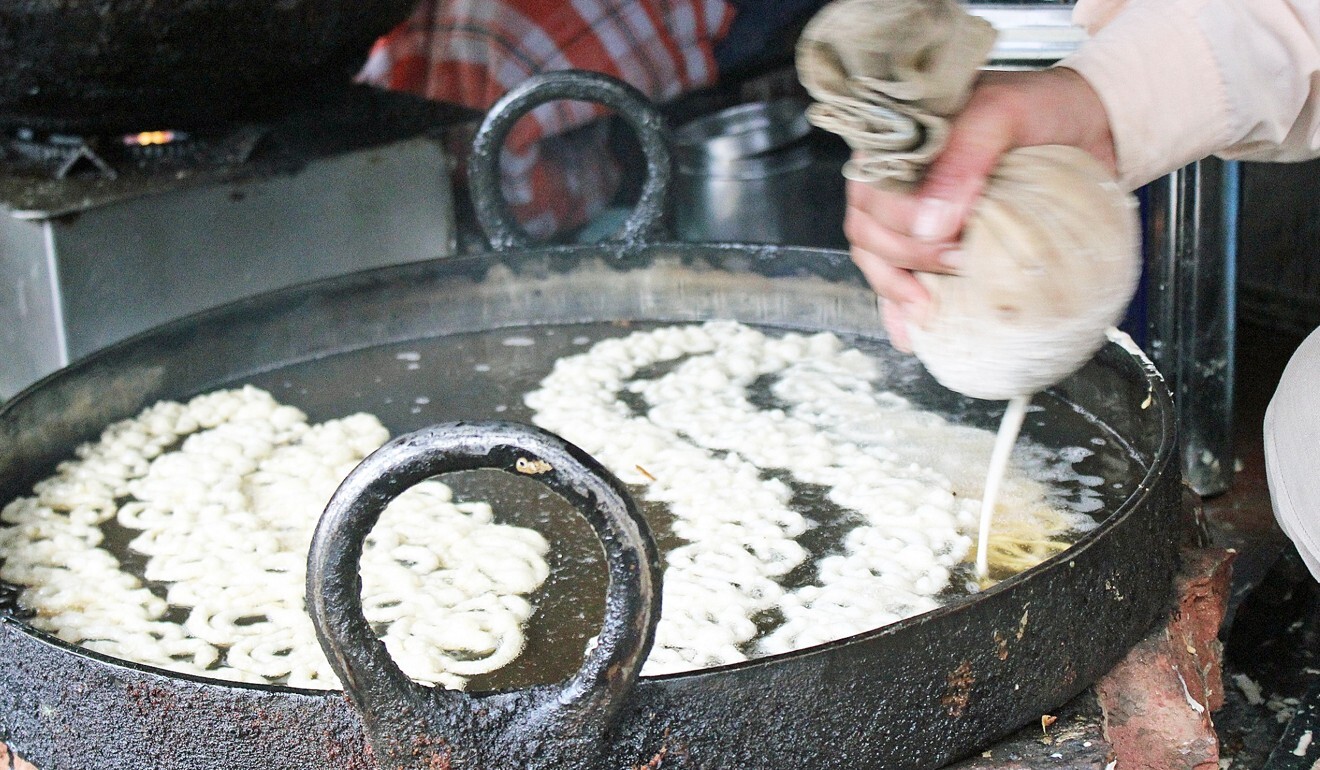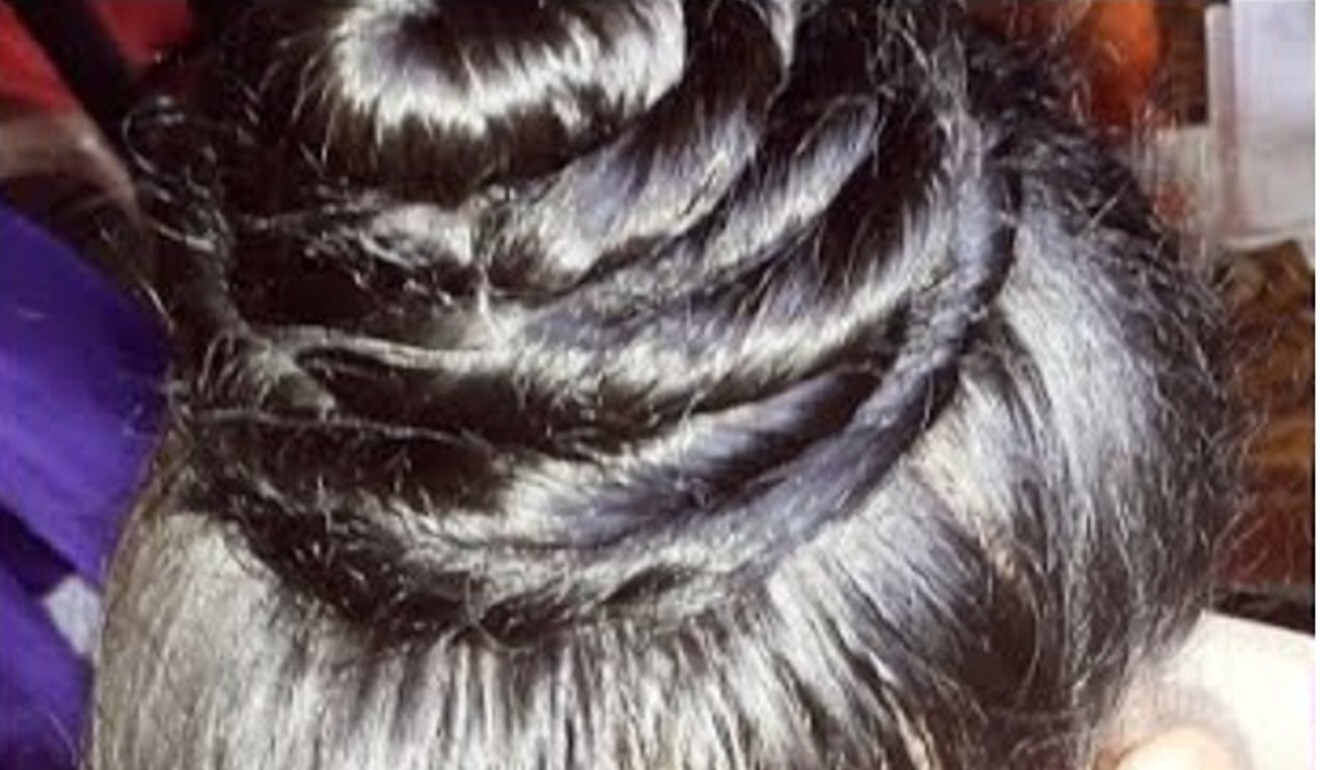
Jumbo ‘jalebi’ to mark Narendra Modi’s birthday highlights India’s favourite celebratory snack
- The popular spiral-shaped crispy orange snack is not just for special occasions – some use it to treat ailments, and it has even inspired a hairstyle
- Jalebi came to India from Persia 500 years ago and the dessert is popular across South Asia, with some chefs even serving it as a savoury dish
Their versions of the bright orange dessert were made to weigh 71kg and distributed to devotees to honour Modi.
But jalebi is not just a celebratory food for special occasions such as weddings and temple events. It is even considered a treatment for a range of ailments. Its spirals remind some of the human intestine and grandmothers have been known to advise youngsters to eat hot jalebi along with a glass of warm milk to cure anything from headaches to intestinal problems or skin diseases.

The name originated from the ancient Sanskrit word jalvallika, meaning full of water, or thick sugar syrup, said George Mathew, the food and beverage manager of the Holiday Inn Hotel in Gurugram, a global outsourcing hub near New Delhi.
“After its arrival in India some 500 years ago, jalebi got a new avatar, new colour, crystallised texture and it became crispier,” said Mathew, who has an extensive knowledge of jalebi and its history.
Since then, it has become intertwined with the gastronomic demography of South Asia. Jalebi served with creamy rabdi (a sweet dish made by simmering milk until it thickens) is a year-round favourite not just in parts of India but also in Pakistan and further afield in Dubai, home to a thriving Indian diaspora.
The syrup-filled orange coils with their unique flavour are known by different names like jilbi, zelapi, jilipi, jilapir, jahangiri, jilapir pak, zoolabiya and zangoola across the Middle East, and as jeri in Nepal.

In Iran, zoolabiya is prepared on special occasions and also distributed to the poor during the Muslim holy month of Ramadan.
In Hong Kong too, jalebi is popular not only with the Indian diaspora, but also in the wider community.
“I love jalebis, and I often visit Chungking Mansion on Nathan Road, the Little India of Hong Kong, with my friends to relish jalebis,” said Nadia Ali, a 31-year-old online gold trader who is of both Indian and Chinese descent.
Mumbai’s Vada Pav snack gets new attention after British diplomat’s tweet
Unlike other Indian sweets, which are largely milk-based, jalebi is prepared by deep frying a fermented batter made of all-purpose flour (maida), gram flour, yogurt, cardamom powder and saffron, and then dipped into a sweet syrup known as chasni, made of sugar, spices, and water.
The batter is whisked until a ribbonlike consistency is reached. It is then transferred into a muslin cloth shaped into a cone with a small pierced hole in the centre, and is artistically squeezed in circular loops into boiling hot ghee or oil, or is deep fried.

The mushy, white swirls of batter quickly turn into crispy, golden jalebis, which are then immersed in chasni for a few minutes to retain the crispiness on the outside with a crystallised sugary exterior coating, and soft and chewy on the inside.
“The preparation consumes almost the entire day. We have to start early in the morning for customers coming for breakfast, and in the evening returning after a hard day’s work,” said Ramlakhan Yadav, owner of a roadside stall in New Delhi who has been selling hot milk and jalebi for two decades.
How Indian pickles matured from ancient art to world-beating business
To chef Anuf Wadhawan, who owns a Pan Asian restaurant in Delhi, jalebi can also be enjoyed with savoury accompaniments, such as with chole poori (a dish of flatbread with masala chickpea) and yogurt, or with fafda (a crispy savoury snack made of gram flour).
Gagandeep Singh Bedi, the executive chef of Roseate House, a hotel in New Delhi, said he also offers savoury jalebi.
“Our menu has jalebi as a savoury dish and is named Jalebi Chaat that we make by adding sweetened yogurt, sauces and toppings to the crisp unsweetened coils to produce a snack that is sweet, spicy and sour at the same time.”

Such is the popularity of the snack that it has even inspired a hairstyle – the Jalebi Juda, where women tie their hair in a spiral form resembling a jalebi.
The style is common in eastern India, particularly among women with very long hair, and is often worn on special occasions. But it is seen as going out of fashion elsewhere as younger women prefer to wear their hair loose.

